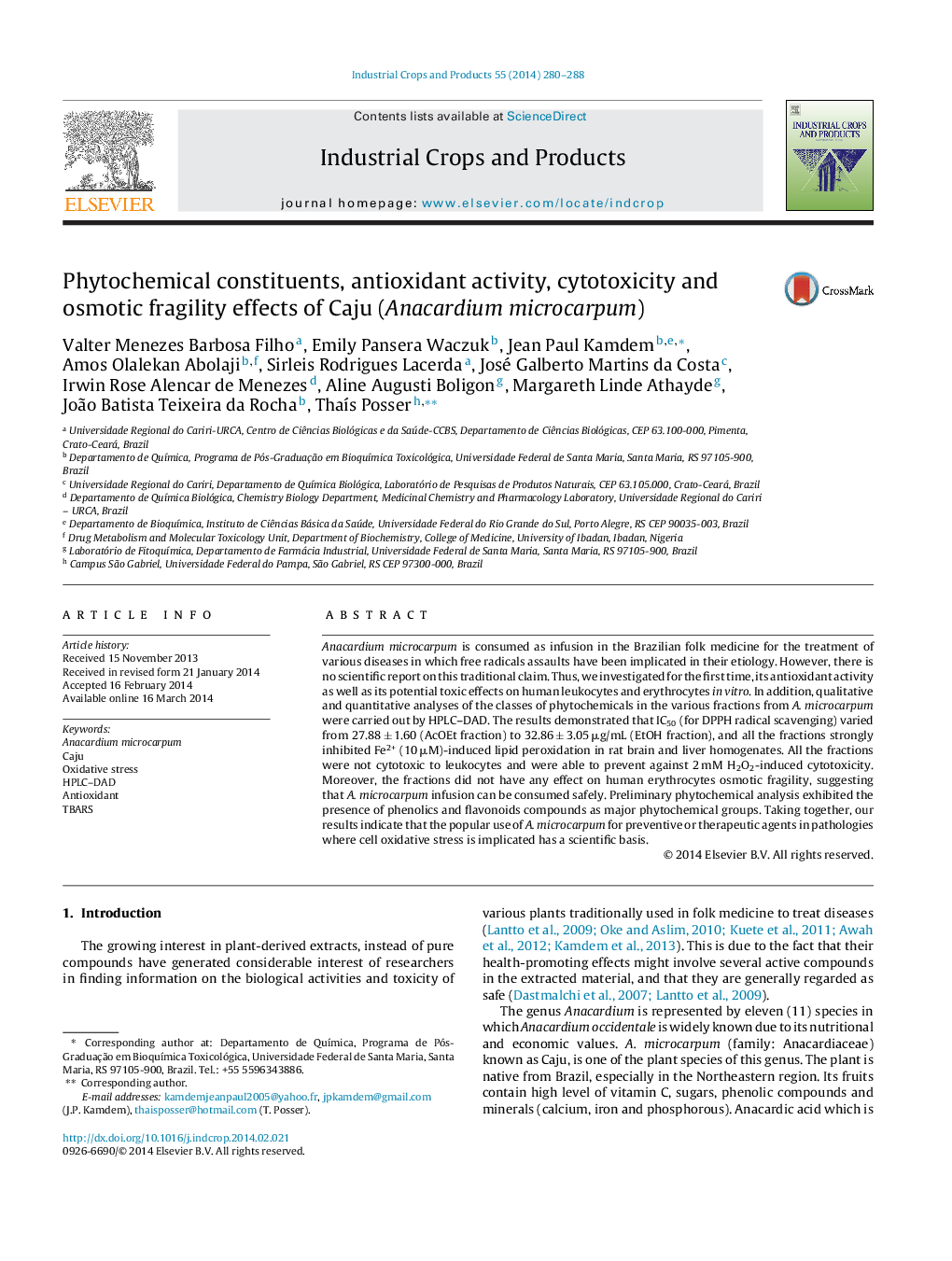| Article ID | Journal | Published Year | Pages | File Type |
|---|---|---|---|---|
| 6376789 | Industrial Crops and Products | 2014 | 9 Pages |
â¢Anacardium microcarpum fractions showed significant DPPH scavenging activity.â¢The fractions inhibited Fe2+-induced LPO in brain and liver homogenates.â¢The fractions were not cytotoxic to leukocytes and prevented H2O2-induced cytotoxicity.â¢The fractions did not have any effect on human erythrocytes osmotic fragility.â¢A. microcarpum showed the presence of phenolics and flavonoids compounds as major phytochemical groups.
Anacardium microcarpum is consumed as infusion in the Brazilian folk medicine for the treatment of various diseases in which free radicals assaults have been implicated in their etiology. However, there is no scientific report on this traditional claim. Thus, we investigated for the first time, its antioxidant activity as well as its potential toxic effects on human leukocytes and erythrocytes in vitro. In addition, qualitative and quantitative analyses of the classes of phytochemicals in the various fractions from A. microcarpum were carried out by HPLC-DAD. The results demonstrated that IC50 (for DPPH radical scavenging) varied from 27.88 ± 1.60 (AcOEt fraction) to 32.86 ± 3.05 μg/mL (EtOH fraction), and all the fractions strongly inhibited Fe2+ (10 μM)-induced lipid peroxidation in rat brain and liver homogenates. All the fractions were not cytotoxic to leukocytes and were able to prevent against 2 mM H2O2-induced cytotoxicity. Moreover, the fractions did not have any effect on human erythrocytes osmotic fragility, suggesting that A. microcarpum infusion can be consumed safely. Preliminary phytochemical analysis exhibited the presence of phenolics and flavonoids compounds as major phytochemical groups. Taking together, our results indicate that the popular use of A. microcarpum for preventive or therapeutic agents in pathologies where cell oxidative stress is implicated has a scientific basis.
Graphical abstractDownload full-size image
